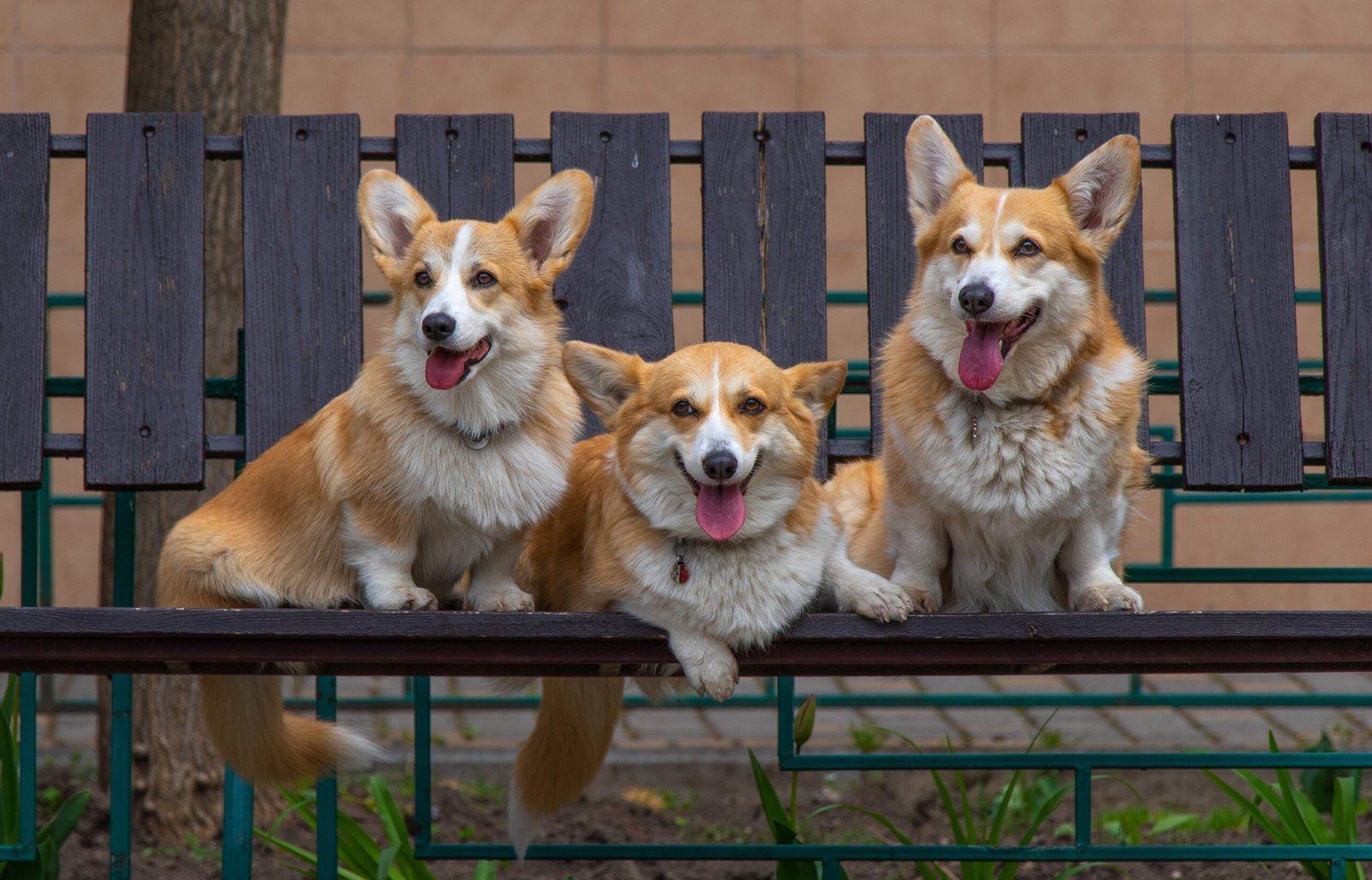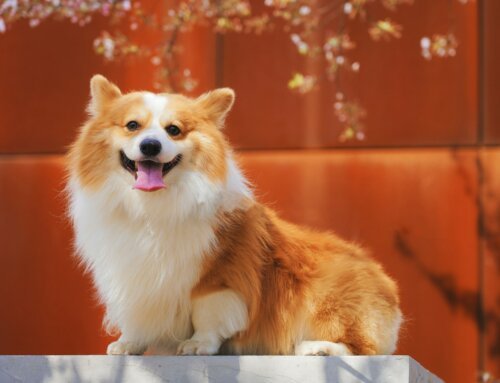Find out curious facts about the history, appearance and characteristics of the cutest stubby-legged dogs, the Welsh Corgi Breed.

AUTHOR
Editorial Team
CATEGORY
Facts
POSTED ON
1 November 2024
All About The Welsh Corgi Breed
The Welsh Corgi is hands-down one of the most amazing dogs on the planet. Of course, we at All About Corgis are completely objective. Joking aside, corgis have that rare combination of intelligence and goofiness, protective devotion and kind, affectionate character that almost no other breed of dog possesses.
Originally a shepherd breed of dogs developed in rural Wales a millennia ago, these dogs have excellent herding instincts which make them exceptionally smart, obedient and loyal companions for both single people and families with kids.
In this article we will look into some curious facts, the history of the breed and the typical physical appearance of the two breeds of Welsh corgis. Wait a minute, did you say two breeds?
Are Pembroke and Cardigan Corgis One and the Same Breed?
There are two varieties of Welsh Corgis: the Pembroke and the Cardigan. While there are many similarities between them in terms of character and behaviour, the two are considered separate breeds due to some differences in their lineage and physical appearance.
The Pembroke Welsh Corgi, in particular, is associated with the Pembrokeshire region, while the Cardigan Welsh Corgi hails from Cardiganshire. The Pembroke Welsh Corgi is the favoured breed of British royalty, particularly the late Queen Elizabeth II.
Where Does the Welsh Corgi Breed Come From?
The Welsh Corgi is considered to be native to Wales, the United Kingdom. This, however, is not where the breed originated, at least not entirely.
The Cardigan Welsh Corgi, the older of the two breeds, is thought to have descended from dogs brought to Wales by Celtic tribes over 1,000 years ago. These dogs are linked to the Swedish Vallhund, another ancient herding breed.
In contrast, the Pembroke Welsh Corgi is believed to have more recent origins, influenced by Flemish weavers who migrated to Wales in the 10th century. They brought the predecessor of today’s Pembroke corgi to the British Isles where it interbred with local dogs, and gradually evolved into the breed we know today.
What does the name “corgi” mean?
The name “Corgi” is said to be derived from the Welsh words “cor” (dwarf) and “gi” (dog), referring to the breed’s dwarf-like look. Cardigan Welsh Corgis are also sometimes fondly called “yard-long dogs” due to their size.
What are the Physical Differences Between Cardigan and Welsh Corgis?
There are subtle physical and temperamental differences between the two breeds: Cardigans are more robust and cautious, while Pembrokes are lighter and more extroverted.
The Cardigan:
The Cardigan Welsh Corgi has a long, fox-like tail. It is a little bigger and heavier boned. Its coat can be coloured in brindle, blue merle, black and white with brindle or tan points, and red and sable with white markings.
The Pembroke:
The Pembroke Welsh Corgi is a little lighter, smaller and livelier, and might have a congenital stump of a tail, although not always. Its coat can be red, sable, or tricolour, usually with white markings.
What Are Welsh Corgis Known for?
Corgis were originally employed as herding dogs for sheep and other cattle, and many continue to serve this role even nowadays. Everything about their breed – both physically and mentally – make them extremely well suited for the job. Their small stature allows them to easily nip at the heels of livestock without being kicked, while their bold temperament, agility and intelligence make them efficient at herding.
Corgis began to gain popularity outside of their role as working dogs in the early twentieth century. Queen Elizabeth II of the United Kingdom popularized the breed. Her passion for Corgis, particularly her famous Pembroke Welsh Corgi named Susan, made the somewhat obscure bred widely popular.
The Corgi Temperament
The corgi is almost never aggressive or nervous, unless openly provoked or aware of a threat. Corgis can be extremely kind, friendly, affectionate, outgoing, and playful. Shortly put, they can be a lot of fun to be around because they are full of love.
Corgis are also highly intelligent, confident, alert, and quick to learn new skills and adopt new habits. They are devoted, attentive and thanks to their strong work ethic, eager to please their humans, which makes them excellent companions.
The Corgi Herding Instinct
Don’t let their small size and dwarf legs deceive you! Corgis are highly energetic working dogs. Due to their evolution as a shepherd breed, they possess a very strong herding drive, and might feel compelled to herd smaller animals, kids or even a group of adults.
Due to their high levels of energy, Corgis need both regular physical exercise and mental stimulation. This makes them excellent companions for active people or families with kids. If you are a couch potato or your health doesn’t allow you to lead an active life, a corgi might not be the best dog for you.
Thanks to its herding drive, the corgi has developed a very strong protective instinct and a sense of loyalty to its owners. This is a highly adaptable dog that is a quick study and that possesses a very strong character. All these traits combined make your corgi a very good watchdog, too.
Physical Appearance of the Welsh Corgi Breed
What is a breed standard?
Various kennel clubs and breed organizations around the world, such as the American Kennel Club (AKC), determine a set of guidelines, which describe the ideal characteristics, temperament, and physical appearance of a specific dog breed.
The goal of these guidelines is to ensure breeders have a blueprint that helps them select certain dogs for breeding in order to enhance desirable traits and eliminate undesirable ones. These guidelines are used in dog shows and sports.
However, as a dog owner, you do not need to find a pup that meets any of these standards unless you want to breed dogs or take your pet to shows. Your corgi does not need to meet the breed standard in order to be a good, healthy and happy companion.
Here are some of the typical characteristics of a Welsh Corgi that set it apart from other breeds.
Gait and Movement
Have you ever seen a corgi run like the wind? Probably not. Don’t be deceived by their lack of speed, though, because these tireless, energetic dogs can cover a lot of ground. Corgis are agile, alert and highly active. They might not be sprinters, but they have the endurance and stamina of marathon runners, as well as flexibility and grace – all the qualities needed by a shepherd dog so it can efficiently herd cattle.
Body and general appearance
Corgis are strong, sturdily built, and resilient. They have a medium length torso with a broad and deep chest and an oval ribcage. The length of a Pembroke is usually in the rib cage and not the loin.
- Size: The corgi stands at roughly 25-30 cm (10-12 inches).
Males weigh 10-12 kgs (22-26 lbs), while females weigh: 9-11 kgs (20-24 lbs).
- Legs and Feet: Short, strong and flexible legs, straight hocks, and oval feet with strong pads and short nails.
- Tail: Some corgis are born with a short tail that’s a few joints long, while others have a bobtail. It’s not uncommon for owners and groomers to dock a longer tail short in some parts of the world, except in the UK where that’s banned.
- Dewclaws: Dewclaws are usually removed from the rear legs.
Head and Face
The corgi has a wide, fox-shaped, slightly rounded skull that is flat between the ears. Its muzzle is medium-length and tapers slightly to a cute black nose.
- Eyes: Medium-sized, oval-shaped eyes that are well-separated. Eye colour can vary from dark in hue to pale blue or specked blue.
- Ears: Pointed, upright, medium-sized ears that are triangular but slightly rounded at the tips.
- Mouth: Corgis have a scissor bite, and their upper teeth overlap the lower teeth.
Coat and Colour
- Coat: Corgis have a medium length, straight double coat, which evolved to protect the dog from the harsh, rainy Welsh weather. The outer is short, dense and weather-resistant, while the undercoat is soft and thick. Some corgis can be born somewhat fluffier than what’s typical for the breed.
- Colours: The corgi coat can feature any combination of red, sable, fawn, black and tan, with or without white markings on the legs, brisket and neck. Some corgis have a tricolour pattern of black, tan and white. Although not considered a breed standard, it’s not uncommon to see corgis with blue, blue merle, brindle and other variations of these hues.
Corgis are delightful, loyal, and intelligent companions who can bring joy to any household. Whether you prefer the spirited Pembroke or the dignified Cardigan, a Corgi’s endearing personality makes it an excellent choice for dog lovers of all kinds.
Now that you know more about the Welsh Corgi, you might be better equipped to decide whether you can handle one in your life. Better yet, to help you make an informed decision you might want to check out our article about the crucial things you must know before deciding whether to adopt a corgi.






